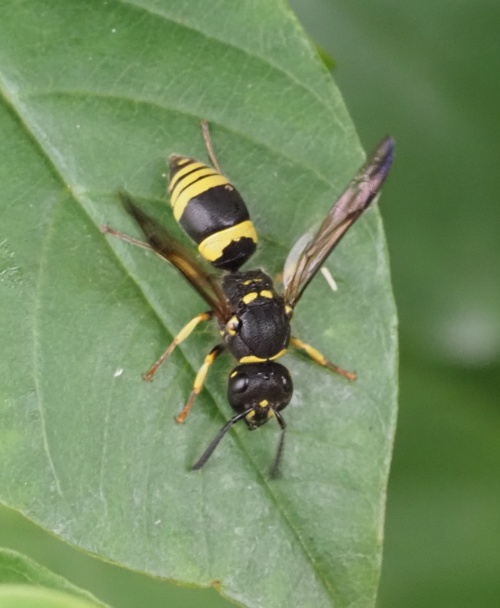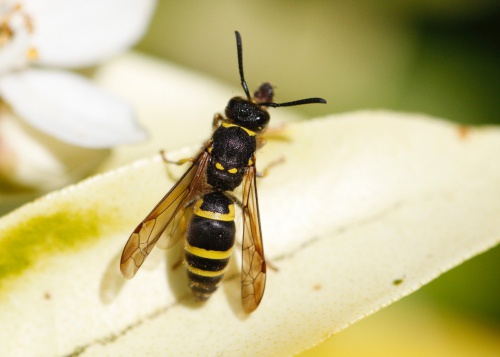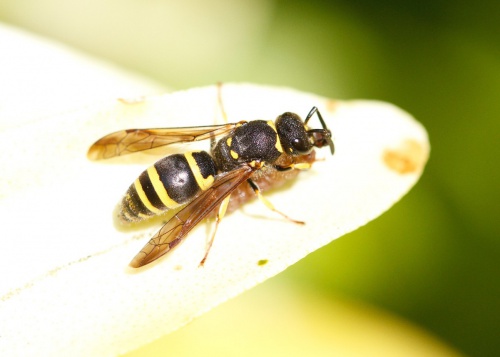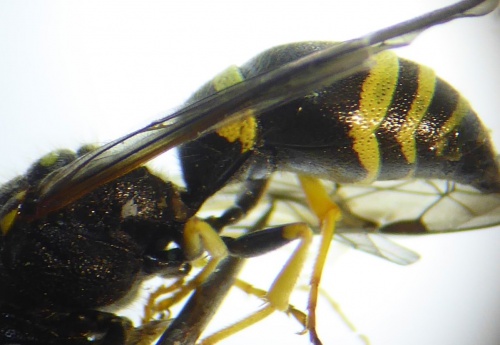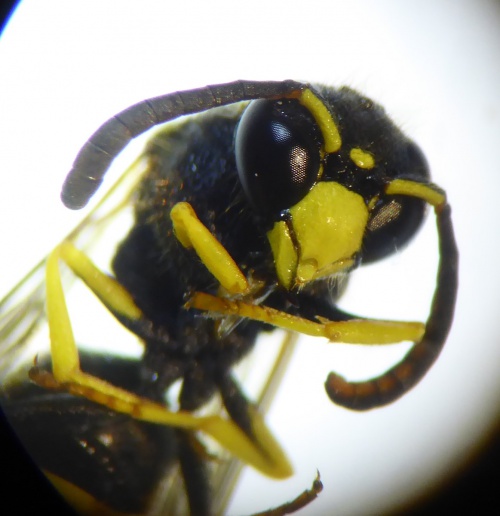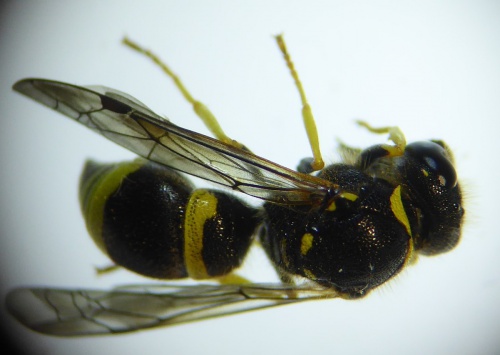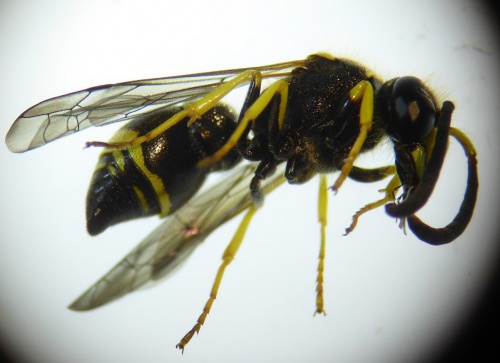Ancistrocerus gazella
Ancistrocerus gazella has black and yellow markings typical of this family. Very similar in appearance to Ancistrocerus parietum and detailed examination is needed for a safe identification. See the ID Aid below.
- edge of 2nd ventral plate with small, teeth-like indentations
- ridge across 1st dorsal plate without a forward-pointing, V-shaped, central notch
- yellow on first dorsal plate enlarging at the sides into a roughly rectangular shape
- forewings clouded in cells 1 and 2
Unless identified by a recognised expert, a photo is required and the specimen should be examined with a microscope. In the comments box, state the key or ID method used and describe the size and identifying characters.
Found in a wide variety of habitats including sandy and clay soils, river banks, coastal areas and open urban, parkland and wooded areas.
Probably univoltine; generally on the wing from June to August, and rarely during May, September and October.
Preying mainly on Lepidoptera larvae.
Widespread in the southern half of Britain especially around coastal locations.
Status in Leicestershire and Rutland not known.
Leicestershire & Rutland Map
Enter a town or village to see local records
MAP KEY:
Yellow squares = NBN records (all known data)
Coloured circles = NatureSpot records: 2025+ | 2020-2024 | pre-2020
UK Map
Species profile
- Species group:
- Bees, Wasps, Ants
- Kingdom:
- Animalia
- Order:
- Hymenoptera
- Family:
- Vespidae
- Records on NatureSpot:
- 6
- First record:
- 12/07/2013 (Helen Ikin;Steve Woodward)
- Last record:
- 03/07/2023 (Nicholls, David)
Total records by month
% of records within its species group
10km squares with records
The latest images and records displayed below include those awaiting verification checks so we cannot guarantee that every identification is correct. Once accepted, the record displays a green tick.
In the Latest Records section, click on the header to sort A-Z, and again to sort Z-A. Use the header boxes to filter the list.



